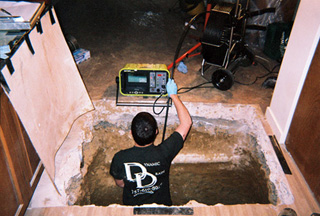Slip Lining

Sliplining is a very old way to rehabilitate existing pipelines. This is used to repair leaks and/or restore structural stability to an existing pipeline and for pipes that are huge in size.
Sliplining is completed by inserting a “carrier pipe” into a “host pipe”, pulling it in place, and sealing the ends. Sliplining has been used since the 1940s.[1] The most common materials used with slip liners are high density polyethylene (HDPE), fiberglass reinforced pipe (FRP) and PVC. Sliplining can stop infiltration and restore structural integrity to an existing pipe. The sliplining application is limited since the replacement pipe has to be no negotiate the access point.
There Is More Than One Way To Slipline
![]()
 The two most popular methods to slipline are: continuous and segmental.
The two most popular methods to slipline are: continuous and segmental.
Continuous sliplining is a long continuous pipe, HDPE or fusible PVC, that is welded into continuous pieces. The carrier pipe is pulled through the host pipe starting at an insertion pit and continuing to the receiving pit. Existing access points can limit the effectiveness of going this route. If the size and material of the new carrier pipe can maneuver the existing facilities this method can be applied when CIPP is not an option.
Segmental sliplining– The difference is primarily based on the type of pipe being used. If the type of pipe is bell and spigot pipe such as FRP, PVC, or HDPE the individual pieces are lowered into place, mushed together, and heaved along the existing pipe corridor.
In both cases the annular space between the two pipes must be grouted. Insanitary sewerlines, the service laterals must be reconnected via excavation.
Advantages
![]()
Sliplining is generally a very cost effective. It is easy to install and requires tools and equipment widely available to any pipeline contractor. Segmental sliplining may not require the bypassing of an existing flow.
Limitations
![]()
The new pipe has a greatly reduced cross sectional area because of the size difference between the two pipes and vthe wall thickness of the new pipe. Sewer laterals can only be reconnected via excavation. Installation usually requires excavation at the insertion and receiving pits. Continuous sliplining will most oftten require bypassing of the existing flow.
